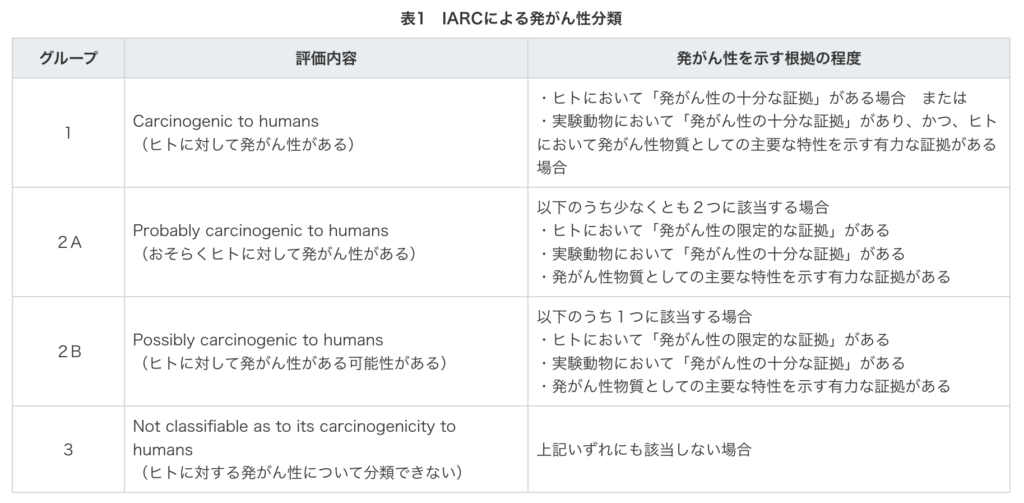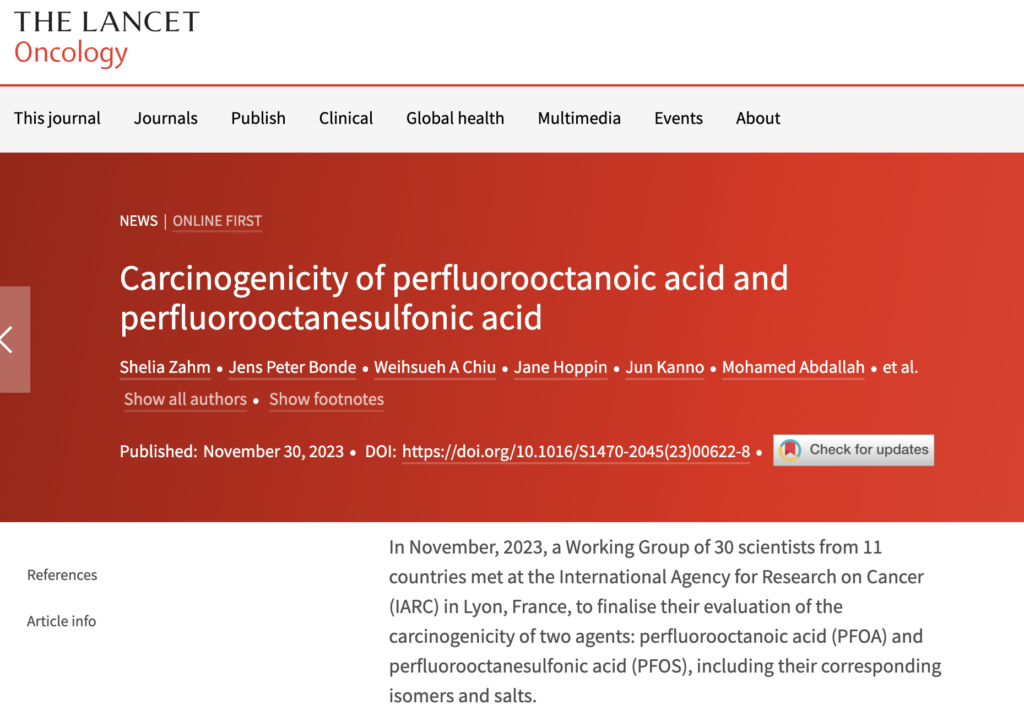WHO Cancer Specialized Agency, PFOA is “Carcinogenic” / Placed in the same category as asbestos and cadmium / Japanese Cabinet Office also publishes results
2024.01.09 15:36 Nanami Nakagawa
On December 1, 2023, the cancer-specialized agency of the WHO (World Health Organization), IARC (International Agency for Research on Cancer), announced the latest assessment of the carcinogenicity of PFAS.
PFAS is a general term for organic fluorine compounds. Among these, the most toxic substances are PFOA and PFOS. PFOA, manufactured and used by Daikin Industries, has been used in daily products such as fluorine-treated nonstick frying pans and waterproof sprays for many years. PFOS is the raw material for extinguishing foam used to put out oil-based fires that cannot be extinguished with water. Often used at military bases and airports.
After deliberations, IARC experts announced that they had enough evidence to conclude that PFOA is “carcinogenic.” It was classified as Group 1, the highest rank, alongside asbestos and cadmium. PFOS was classified as “possibly carcinogenic,” two levels lower than PFOA.
The Daikin Yodogawa Plant in Settsu City is the source of the contamination in Osaka Prefecture, which has the highest level of PFOA contamination in the country. A preliminary study from an epidemiological investigation undertaken by a research team from Kyoto University and a group of doctors from Osaka showed unusually high levels of PFOA in the blood of people living near Daikin factory.
There is “strong mechanistic evidence in exposed humans.”
IARC is the specialized cancer agency of the WHO. From an independent standpoint, it aggregates and examines knowledge from around the world and evaluates the carcinogenicity of chemical substances. The goal is to identify the causes of cancer, promote preventive measures, and reduce the burden of illness.
The IARC meeting took place in Lyon, France, from November 7th to November 14th, 2023. Thirty experts from 11 different nations gathered to properly review all of the research on PFOA and PFOS. They discussed the scientific foundation for determining carcinogenicity.
As a result, PFOA was classified as “Group 1 = Carcinogenic to humans.”
Until now, PFOA had been rated as “Group 2B =Possibly Carcinogenic to humans”. The reason why it was raised to two levels at once this time is as follows:
“PFOA is carcinogenic to humans, on the basis of sufficient evidence for cancer in experimental animals and strong mechanistic evidence in exposed humans.”
Group 1 includes PFOA, asbestos, cadmium, tobacco, and alcoholic beverages.
PFOS was classified as “Group 2B = Possibly Carcinogenic to humans.”

From the Cabinet Office/Food Safety Commission website
A summary of the evaluation has already been published online in the prestigious medical journal The Lancet Oncology. The Cabinet Office/Food Safety Commission also published the IARC presentation in Japanese on its website.
IARC is expected to release a detailed report in 2024.
93% of residents near Daikin Yodogawa Plant have high concentration
In response to IARC’s announcement, what is more worrying is the impact on the health of Osaka residents.
On November 11, 2023, the “Osaka PFAS Contamination and Health Study Group,” reported on the progress of blood tests.
The interim report disclosed the blood levels of PFAS in 87 people living near the Daikin Yodogawa Plant, where PFOA was once manufactured and used.
Of the 87 people, 81 (93%), had concentrations above 2 ng/ml. This is a level that the National Academies of Sciences, Engineering, and Medicine in the United States announced in 2022 in its guidance on blood levels of PFOA, which indicates that “treatment is necessary.”
Pregnant women in particular need to be tested for gestational hypertension. Gestational hypertension is a condition in which women who did not have high blood pressure before pregnancy develop high blood pressure between the 20th week of pregnancy and the 12th week after childbirth, and it is one of the typical diseases caused by PFOA. It causes maternal hemorrhage, deterioration of liver function, fetal growth failure, etc., and in the worst case, it leads to death of mother and child.
Furthermore, 20 people (23%) had levels over 20ng/ml. This is a level that the same guidance warns that “treatment which must take into account risks such as kidney cancer, testicular cancer, ulcerative colitis, and thyroid disease is necessary.”
The basis for Daikin’s claim has collapsed
Until now, Daikin has avoided drawing attention to the dangers of PFOA and its responsibilities, using the fact that PFOA was classified as a “possibly carcinogenic” substance in Group 2B by the IARC.
At a briefing session for Settsu residents and city councilors, Daikin pointed out the IARC classification and emphasized, “It is not ‘carcinogenic’ but ‘may be carcinogenic.'” In Tansa’s interviews with Daikin executives, a chemical division executive even asked about PFOA, “Is it dangerous?”
However, such Daikin’s claims will no longer hold water.

“Carcinogenicity of PFOA and PFOS” published in “The Lancet Oncology” on November 30, 2023
(Originally published in Japanese on December 11, 2023. Translation by Mana Shibata.)
Polluted with PFOA: All articles
 Newsletter signup
Newsletter signup